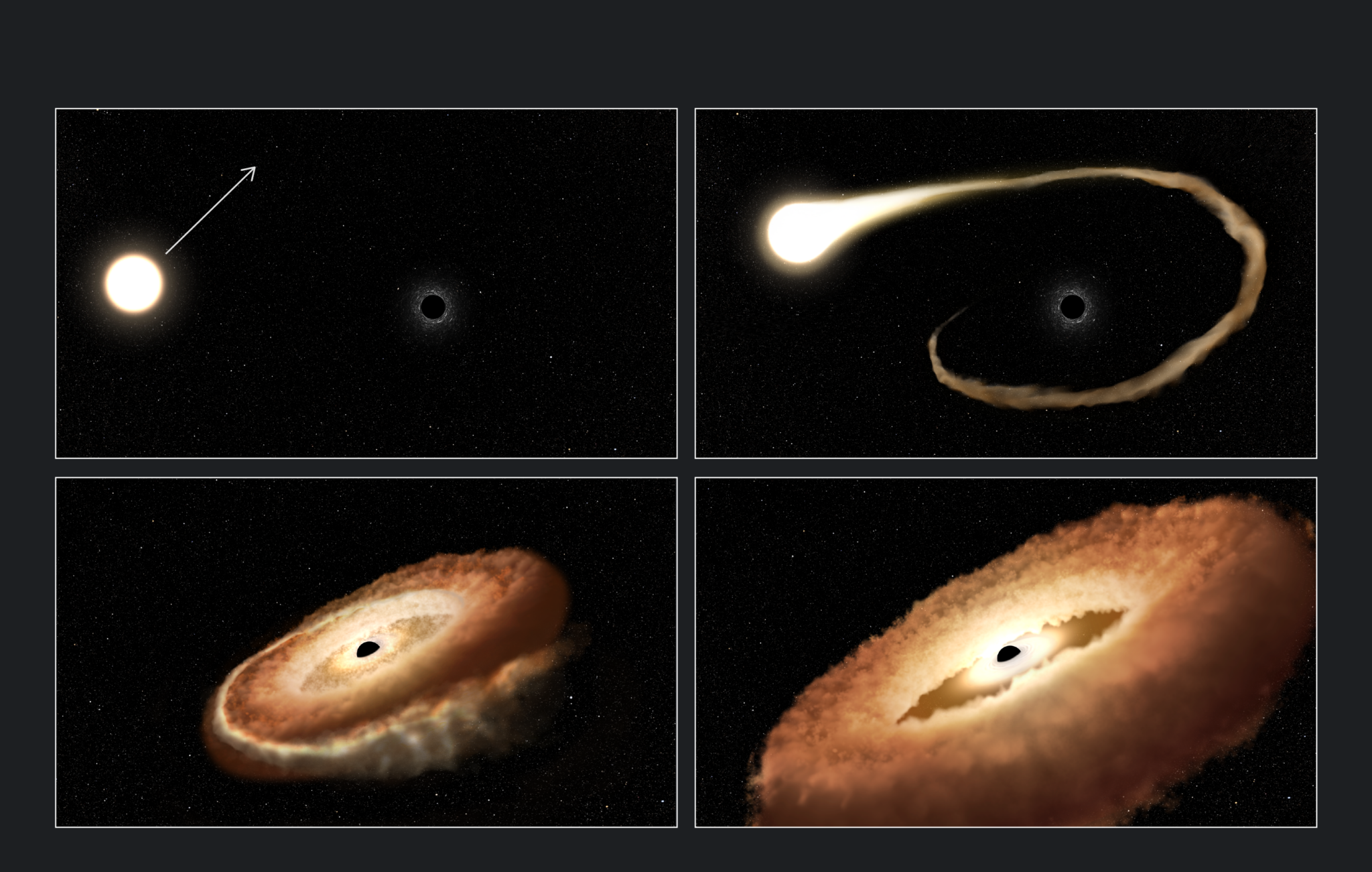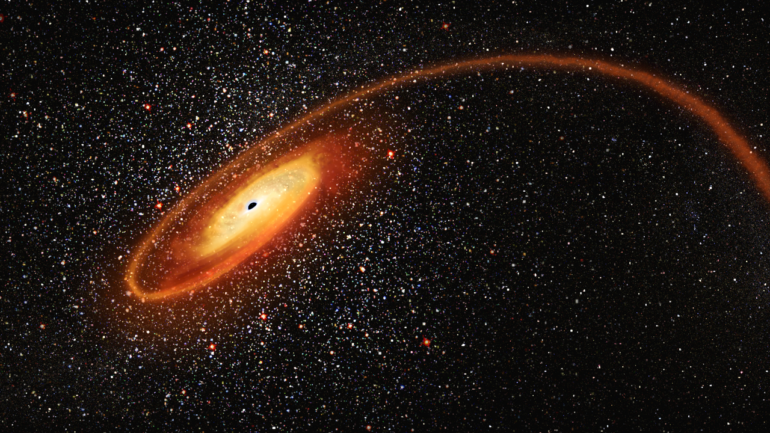
Some stars say goodbye to life by burning up and exploding as supernovae, while others inflate and eject material before contracting and cooling. However, there are also those who face a more tragic fate – they are torn apart and devoured by a hungry black hole. Such an event happens only a few times every 100,000 years, but recently it was still able to be seen by the Hubble Space Telescope.
Researchers watched the last moments of a star’s life as it got too close to a black hole and was swallowed up by it, emitting its last burst of light.
The event, called AT2022dsb, is a so-called ‘tidal collapse event’ caused by the enormous gravitational forces of a supermassive black hole. Such holes can hide in the centers of galaxies and gradually pull layers of gas away from stars that approach them too closely.

Eventually, the star is shredded, and its remains are drawn in by the accretion disk, the disk of matter around the black hole from which it feeds.
“Black holes are big eaters. They feed on this disc—which is shaped like a huge donut—from the inside. And they eat too much, emitting radiation at the same time, due to which this accretion disk swells,’ explained one of the researchers, Emily Engelthaler from the Harvard-Smithsonian Center for Astrophysics.
Part of the radiation continues to spread in the form of jets, but this time the researchers focused on the radiation that passes through the accretion disk itself. Using Hubble, they observed the ultraviolet light coming from the star and, using spectroscopy, broke it down into wavelengths to see which ones were absorbed. This allows us to find out what elements were present during the event to further analyze the chaos inside the black hole.
Such events are not often observed in the UV because this wavelength is easily blocked and therefore difficult to collect data. A telescope outside the Earth’s atmosphere was needed.
“Ultraviolet penetrates the atmosphere very poorly, which is great for us, but terrible for observation. That’s why we have to use a space telescope,’ Engelthaler said.
The researchers wanted to know how the star and the black hole changed over time, so they conducted a series of observations over several months. They found that the disk’s temperature dropped over time, and stellar winds (a constant outflow of gas from stellar atmospheres that carry stellar matter into interstellar space) flew toward us at enormous speeds of more than 32 million km/h.
However, the spectra the researchers collected were not stable—they changed over time. This may have been affected by the range of the probe source, so the signals could be “lost” in the noise — or the disk around the black hole has actually become thinner and the amount of material it pulls in has decreased.
“We are still sorting through this event. The star is cut into pieces, then there is material that is ‘made’ into the black hole. That is, we have certain models that explain what is happening. And then we see in reality how it really goes. This is an exciting place for scientists: right at the junction of the known and the unknown,’ researcher Peter Maksym said in his statement.

